Homemade, indoor rose.
An indoor rose in a flower pot is the dream of many house plant lovers.The delicate aroma of flowers and the grace of the branches will not leave anyone indifferent. But it is believed that this flower is very difficult to grow.
How difficult is it to care for an indoor rose at home? It is no more difficult than caring for an ordinary garden one, if you provide it with the same conditions. The rose is not a tropical plant or a desert flower; it requires a temperate climate and cool wintering.
Potted roses are compact bushes up to 35-45 cm. The flowers are small, very decorative, can be fragrant or odorless, and come in a variety of colors.
Care varies according to the seasons of the year. As in natural conditions, it requires a cold winter. Too high a temperature in summer is also harmful. In the warm season, these plants are recommended to be taken out into the open air.
Indoor flowers react differently to plants in the neighborhood. The indoor rose is the most “friendly” - it feels great next to any plant.
Homemade rose after purchase
What to do with an indoor rose after purchase? This question immediately arises before everyone who has bought or received a pot of this wonderful flower as a gift. What is better, immediately transplant it into a larger pot or let the rose get used to the new conditions, and only then start replanting? It must be said that flower growers do not have a consensus on whether to replant flowering plants bought in a store or not.
If the purchased home rose grows in a pot of soil and looks quite healthy and fresh, then let it stand somewhere in the shade (not on the windowsill) for a week. Give the plant time to acclimatize to home conditions, and then plant it in a larger container with fertile soil.
But often plants in greenhouses are planted in peat and stuffed with all kinds of chemicals.Flower growers complain that such flowers sometimes die 3-4 weeks after purchase. In order for indoor roses to feel good, they need to be transplanted from peat to more fertile soil.
Replanting an indoor rose after purchase
For planting, it is best to use a soil mixture, and not peat from a package called “Rose”. The composition of the soil for replanting: turf, leaf soil, humus, sand (2: 1: 1: 0.5). We will replant into a pot of larger diameter, those. 2.5-3 cm larger than the previous one. Be sure to make drainage holes in the pot for water drainage and root breathing.
Before transplanting the rose, water it, carefully remove it from the pot, and remove all large lumps of old soil. Then lower the earthen ball into a basin of warm water, carefully washing off the soil, while trying not to damage the roots of the plants. Small roots can be washed under running shower. Next, carefully examine the roots and remove rotten and dried ones. As a preventive measure against fungi and root rot, you can dip the roots in a fungicide solution for half an hour.
When transplanting flowering domestic roses, it is recommended to remove all flowers and buds. This will make it easier for the plant to tolerate replanting, and it will not waste extra energy maintaining flowering and opening buds.
You need to put a little expanded clay at the bottom of the pot, then add a small layer of soil. After this, holding the plant with your hand, place it in the middle of the pot, straightening the roots. Next, start adding the prepared soil to the pot using a spoon or scoop, lightly tamping it down.
When planting, it is necessary to ensure that the roots of the plants are not exposed and that the trunk of the plants is not excessively deep - it is necessary to navigate along the root collar. If your roses have well-developed and healthy roots, you can water them immediately after transplanting. And if there were few roots or they were damaged by rot, then it is better to postpone watering and do it only after a few days. For now, just spray the leaves of the plants with water.
It is better not to feed newly transplanted domestic roses and postpone this procedure for two months.
Growing and caring for homemade roses in pots
After you have replanted the purchased beauty, it needs to be provided with proper care in pots.
Caring for home roses consists of the following: watering, fertilizing, pruning, annual replanting into a larger pot, prevention and treatment of diseases of indoor roses.
How to water. Indoor roses need to be watered only when the soil in their pots dries out. Roses do not tolerate too cold or hot water, so they should only be watered with settled water at a temperature of 20-25 degrees. Another favorite process of these beauties is spraying the leaves. This procedure should be performed with cold water in the evenings, but not every day.
During the dormant period (autumn and winter), domestic roses are watered less frequently, and the soil in the pot is left dry for two to three days. Water for irrigation should be slightly colder than room temperature.
Feeding. House roses need fertilizer more than other plants. It can only be replaced by frequent transplants, which roses do not like. The quality of the fertilizer determines the number and size of flowers and the frequency of flowering.Beginner flower growers can recommend ready-made complex fertilizers or special fertilizers for indoor roses. The basic rule is that plants need to be fertilized during the period of growth and flowering, and during the dormant period, fertilizing should be reduced.
The first feeding is carried out a month after transplantation, and then until new shoots begin to appear - once every 2 weeks. With the appearance of shoots and buds, homemade roses begin to require increased attention and care; they should now be fed once a week. It is best to use concentrated liquid fertilizers (Effect, Raduga, Pokon), slow-acting fertilizers, such as Kemira Universal (1 teaspoon per bush every 15 days) or a little pure vermicompost to fertilize roses.
How often should you replant? The list of activities for caring for home roses includes mandatory annual plant replanting. The root system is growing all the time and needs more and more soil every year. Planting a home rose directly into a large pot is not a very good option; annual replanting is much better.
It is best to buy a glazed ceramic pot; it should be 2-3 cm larger in diameter and 5-7 cm in height than the old one. Be sure to take care of drainage. If the pot has a hole, the layer should be at least 1 cm.
You can replant at any time of the year, but it is best in early spring or late summer, then they will bloom more profusely. When replanting, do not disturb the earthen ball, just add new soil around the edges and to the bottom of the pot. After transplanting, spray the plant 2 times a day. For such attention and careful care, roses will definitely thank you with long and abundant flowering.
Pruning home roses
Pruning rules. For all groups and varieties of roses, including indoor ones, there are general pruning rules: Pruning is done only with sharp pruners or a knife, since a torn cut caused by blunt tools can lead to the death of the entire shoot. The shoots are pruned above the bud, which is located on the outside (does not look into the inside of the bush). Trim the shoot as close to the bud as possible.
Cut off all weak, thin and twisted branches completely. The “plug” shoots that lack the upper central bud are completely removed. If two stems intersect, then one of them is removed. When, after trimming the stem of a domestic rose, 2 or 3 shoots grow from one bud, you need to remove the excess ones as quickly as possible.
Bush formation. Before planting, the largest stems of roses are selected and shortened to 10–15 cm, leaving 3–5 buds. All weak and thin branches
cut off completely.
Rose bushes of the Miniature group are given the shape of a ball, ellipse, or cone. Roses of the Bengal and Floribunda groups can be given any geometric shape. In addition, their stems can be directed along a trellis, ladder, or arcs, placing them in space in one plane or volumetrically.
When growing at home on a narrow windowsill, it is very convenient to place the shoots on a trellis or arcs in one plane: fan-shaped, in the form of a circle, a ring, etc. When the plants are on stands and there is enough space, you can direct the shoots along arcs in the form of a ball, vase , baskets - as your imagination dictates.
Seasonal care for home roses
At different times of the year, house roses require different care.
Autumn. In autumn, when the night temperature drops to 15-12 degrees, flower pots from the balcony are moved into the room and placed on the windowsill of the south window. When the rose stops blooming and forming buds, it is prepared for wintering: water less frequently (leaving the soil dry for a day or two before watering) and stop feeding.
Winter. Caring for home roses in winter consists of rare watering and spraying of the plant, especially in a room where there is additional heating and the air is constantly drying out. The home rose does not grow or bloom in winter; it looks very sickly, constantly shedding its leaves. During this period, try to prevent the air in the plant’s space from drying out - place the pot on a tray with wet pebbles, water once every 2-3 days.
Spring. In spring, all living things awaken and you have to take care of flowers more often. Since it is at this time that the roses begin to produce new leaves, they require a lot of nutrients, which means that it is time for feeding.
As soon as the nights outside become warm, you can take this beauty out onto the balcony or into the garden. In order not to injure this delicate plant, accustomed to home conditions, by a sharp change in sunlight, for the first two weeks it will need to be in a shady area, and then it can be closer to the sun.
Summer. Summer care consists of watering, spraying, fertilizing, removing faded flowers (cut the peduncle to the first formed leaf bud with pruning shears or a sharp knife). It is necessary to monitor the condition of the plant (so that the rose does not overheat; notice signs of diseases and emerging pests in time).
If your indoor rose grows very quickly, and the chosen pot has become too small for it, wait until the moon grows and transfer the plant to a new, larger pot. In order not to get a one-sided bush, the rose pot must be turned from time to time to ensure uniform lighting.
Indoor rose diseases
Spider mite.
To prevent the appearance of a large number of pests, when growing a rose at home, you need to regularly inspect it, especially the lower, reverse side of the leaf.
If a tick is detected, it must be treated with Fitoverm, Fufanon or Actellik. Treatment with Fitoverm is carried out three times, with an interval of 5 days.
Found on rose bushes and aphids. It affects young shoots. Measures to combat aphids - spraying with insecticides - Actellik or Fitoverm.
Why do indoor rose leaves turn yellow?
If you fail to fertilize the plant in time, then its abundant flowering greatly depletes the rose, and this is the reason for the yellowing of the leaves of the flower. In this case, it will be necessary to fertilize with complex fertilizers.
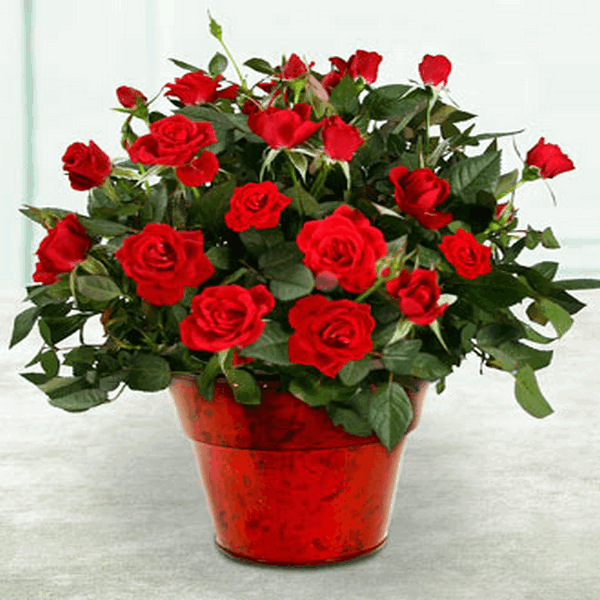
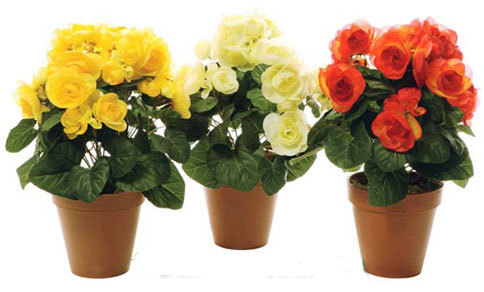
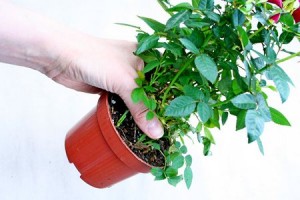
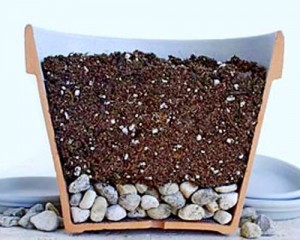

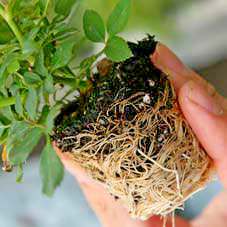

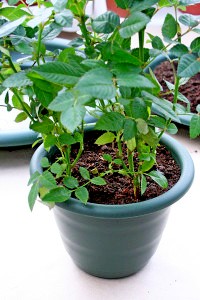




 (3 ratings, average: 3,67 out of 5)
(3 ratings, average: 3,67 out of 5) CUCUMBERS NEVER GET SICK, I'VE BEEN USING ONLY THIS FOR 40 YEARS! I SHARE A SECRET WITH YOU, CUCUMBERS ARE LIKE THE PICTURE!
CUCUMBERS NEVER GET SICK, I'VE BEEN USING ONLY THIS FOR 40 YEARS! I SHARE A SECRET WITH YOU, CUCUMBERS ARE LIKE THE PICTURE! You can dig a bucket of potatoes from each bush. Do you think these are fairy tales? Watch the video
You can dig a bucket of potatoes from each bush. Do you think these are fairy tales? Watch the video
 How our fellow gardeners work in Korea. There is a lot to learn and just fun to watch.
How our fellow gardeners work in Korea. There is a lot to learn and just fun to watch. Eye trainer. The author claims that with daily viewing, vision is restored. They don't charge money for views.
Eye trainer. The author claims that with daily viewing, vision is restored. They don't charge money for views. A 3-ingredient cake recipe in 30 minutes is better than Napoleon. Simple and very tasty.
A 3-ingredient cake recipe in 30 minutes is better than Napoleon. Simple and very tasty. Therapeutic exercises for cervical osteochondrosis. A complete set of exercises.
Therapeutic exercises for cervical osteochondrosis. A complete set of exercises. Which indoor plants match your zodiac sign?
Which indoor plants match your zodiac sign? What about them? Excursion to German dachas.
What about them? Excursion to German dachas.
I’ve already bought homemade roses 3 times and they all dried out within a month or a month and a half. I bought it twice in the store, and once at the market, I have no idea what they needed.
Dasha, you’d better ask your friends for a small rose branch and root it. Homemade roses are easy to take cuttings. You can simply place it in a glass of water or directly in a pot of soil and cover it with a plastic bag. I often root my roses this way, and usually everything works out.
This is a good idea. Indoor roses are especially good at cuttings in vermiculite. You can read more about this method here: http://grown-en.tomathouse.com/propagation-of-roses-cuttings/
Thank you for such a detailed article - a lot of useful information! We also once bought roses in a store, there were 4 roses in one pot, so after 3-4 days three roses dried up, only one plant survived. It was very disappointing. Maybe it really wasn’t necessary to immediately place it on the windowsill after bringing a plant that was accustomed to artificial lighting from the supermarket.
On March 8th I was given a rose in a pot. More than 3 months have passed, she’s alive and well, making the whole family happy)
Elena, did you replant the rose, or is it still growing in the same pot in which you brought it from the store?